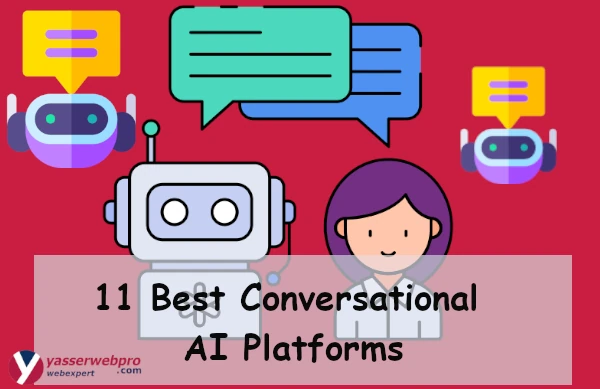Artificial Intelligence (AI) and Machine Learning Evolution started as a myth and today it is part of our daily lives. What AI is, and 7 tools to build This post examines AI from first principles and then touches on some of the key curse tools that have been released in order Goodfellow has come a long way since PCA-sorting Fiji.
Artificial intelligence defined
At its core, AI (Artificial Intelligence) is machines’ simulation of human intelligence. AI, essentially is the category of applications like Natural Language Processing (NLP), Speech Recognition, Machine Vision and Expert Systems, etc. These applications show up in chatbots, voice assistants, facial recognition software, and recommendation systems with which we come into our daily lives.
Mechanics of AI
AI runs on specialized software and hardware that build and train machine learning algorithms. Even though no programming language can represent AI, Java, R, and Python are some of the common languages used by developers in their pursuit of building intelligent applications as these provide features for a developer to incorporate machine learning tasks supported extensively with libraries.
It works by analyzing labeled training data in which the AI system is trained to learn, i.e., recognize patterns and correlations within that data. Then the other end we use that pattern and figure out how to predict these patterns and make decisions on future tasks. AI has programming and development centered on three main areas;
- Learning- In this, all the data is used for learning to build algorithms or rules that convert raw data into actionable insights. These algorithms direct a computer on how to carry out particular workloads.
- Modeling Reasoning: Helps manage which algorithms should be used to provide a certain result; thus enabling the model for making rational decisions based on learned data.
- Self-improvement: The AI continually self-examines and tweaks its algorithms to make them work, adjusting as better data comes in so that it stays up-to-date over time.
Pros and Cons of AI
As with any technology, AI has its pros and cons:
Advantages:
- Detail tasks: AL could pick advantageous right information over and selected that features added nothing but shine plus taken off worker maneuvre.
- Fast data processing — AI can process a large amount of complex data faster than any human, which means not much time is lost.
- Consistency: AI-powered systems deliver the same results every time, free from operational fatigue or errors.
- Availability: Virtual AI-powered agents are live 24/7, which means they never go offline at any point in time.
Disadvantages:
- Expensive: This is a costly endeavor, the implementation and maintenance of AI can be expensive countering its usage by smaller businesses.
- Technology Talent: AI system development and maintenance demands a significant amount of technology talent – which is not in abundance.
- Lack of learning: AI systems can only analyze what they have seen before, and are unable to recognize anything unique that hasn´t been inserted into their learnings.
- Dependence on Specific Tasks: AI may not perform, ( although it can provide sufficient inference about different domains), tasks other than with which it has been built & trained in the predefined domain.
Popular AI Tools
Different kinds of tools play an important role in the development and use case application of AI. Some of them are as follows :
Another popular library for machine learning tasks is Scikit-Learn. Such as cross-validation, feature extraction, and supervised learning algorithms provide an ideal solution for developers building predictive models classification, and clustering.
TensorFlow: TensorFlow is an open-source framework with the Python API developed by Google used for numerical computations, i.e., creating neural networks in a more advanced method. It was designed to let developers focus on writing the Lisp code for their app, not backend operations. The powerful backend management of TensorFlow also means the built-in tools such as TensorBoard for visualizing data and neural network construction enable it to pack a punch when used for serious AI development.

PyTorch: Built on Python, PyTorch is similar to TensorFlow in its application but is often cited for its speed in development. It’s particularly popular in academic research and for building prototypes.
CNTK (Microsoft Cognitive Toolkit): This toolkit specializes in deep learning and neural networks, supporting a broad range of APIs, including Python, Java, C, and C++. Despite its complexity in deployment, it is favored for creating advanced neural structures.
Caffe: Developed by the University of California, Berkeley, Caffe is excellent for both research and industrial applications. Its open-source nature and Python interface—combined with its ability to process roughly 60 million images per day—make it a powerful tool in image recognition tasks.
Apache MXNet: Adopted by Amazon for its AWS deep learning framework, MXNet is renowned for its scalability, running efficiently across multiple machines and GPUs. It supports a versatile range of APIs, including Python, Scala, R, JavaScript, Perl, Go, and Julia, making it a flexible choice.
Keras: This highly user-friendly tool, built on TensorFlow, is ideal for fast prototyping. It runs smoothly on both GPUs and CPUs, enabling quick experimentation from concept to implementation.
OpenNN: Another essential open-source tool, OpenNN, written in C++, offers a platform for advanced analytics and is particularly useful in deep learning research.
AutoML: AutoML stands out by automating the repetitive and time-consuming aspects of machine learning model development. This democratizes ML, making it accessible even to those without specialized expertise.
H2O.ai: An open-source AI tool geared towards business applications, H2O is written in Java and features interfaces for various languages such as Python, R, Java, Scala, Coffeescript, and JSON. Its uses span risk analysis, predictive modeling, insurance analytics, and healthcare.
Popular AI Tools Links
Scikit-Learn – Official website for scikit-learn.
TensorFlow – Official website for TensorFlow.
PyTorch – Official website for PyTorch.
Microsoft CNTK – Official documentation for the Microsoft Cognitive Toolkit (CNTK).
Caffe – Official website for Caffe.
Apache MXNet – Official website for Apache MXNet.
Keras – Official website for Keras.
OpenNN – Official website for OpenNN.
AutoML – Google AI blog on AutoML.
H2O.ai – Official website for H2O.ai.
Types of AI
There are four primary types of AI, each with varying capabilities and applications:
Reactive AI: The simplest form of AI, reactive AI uses algorithms to deliver the best possible output for given inputs. Chess-playing AI is a classic example, as it selects optimal moves based on the current game state. However, it cannot learn from past experiences or predict future scenarios.
Limited Memory AI: This type of AI can make use of historical data to inform decisions and update itself based on new information, but its memory is short-lived. Self-driving cars, for example, use limited memory AI to understand and react to their immediate environment.
Theory-of-Mind AI: AI with theory-of-mind capabilities can understand and interpret emotions and adapt its behavior accordingly. Advanced chatbots that can have natural-seeming conversations and pass the Turing Test—convincing a human that they are also human—are early steps toward this.
Self-aware AI: The most advanced form, self-aware AI would possess self-consciousness and awareness of its existence. While this remains speculative and in the domain of science fiction, its potential and ethical considerations continue to be subjects of intense debate.
Conclusion
More integration is incredibly important for business operations, which have not seen the same performance increases. Just as the digital transformation provided an unprecedented change to paper-based processes, AI is reimagining entire industries by automating services and tasks like never before, crunching data with high precision, and giving hitherto unimaginable answers. After all, companies must look at and use the AI tools that align with their needs to take full advantage of this game-changing tech.
To delve more into AI tools and how they can be employed, it would greatly benefit businesses to consult skilled firms in machine learning development for assistance. The consultation yields customized recommendations, helping organizations leverage all that AI has to offer.




